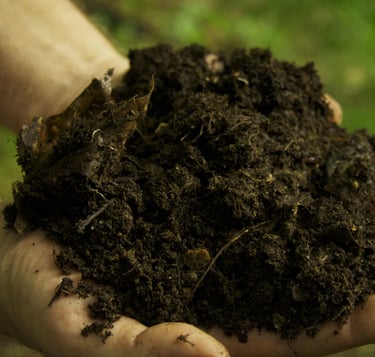Fertilizers
Fertilizers are essential for enhancing soil fertility and promoting healthy plant growth. They supply plants with essential nutrients that may be lacking in the soil, helping to increase crop yields and maintain vibrant landscapes. Understanding the different types of fertilizers and their applications can help you optimize plant health and productivity.




What Are Fertilizers?
Fertilizers are substances added to soil or plants to provide essential nutrients that support growth, development, and overall health. They can be natural or synthetic and are used in various settings, including agriculture, gardening, and landscaping. Fertilizers improve soil fertility, enhance nutrient availability, and help plants grow more efficiently.
Types of Fertilizers
Fertilizers can be categorized based on their nutrient content, form, and source. Here’s an overview of the main types:
1. Complete Fertilizers
Complete fertilizers contain all three primary macronutrients essential for plant growth: nitrogen (N), phosphorus (P), and potassium (K). They are commonly used to support balanced plant growth.
Example: A fertilizer labeled 10-10-10 contains 10% nitrogen, 10% phosphorus, and 10% potassium.
2. Single-Nutrient Fertilizers
Single-nutrient fertilizers provide one primary nutrient and are used to address specific deficiencies in the soil. They are often used in conjunction with other fertilizers to meet the overall nutrient needs of plants.
Types:
Nitrogen Fertilizers: Promote leafy growth (e.g., Urea, Ammonium Nitrate).
Phosphorus Fertilizers: Support root development and flowering (e.g., Superphosphate, Bone Meal).
Potassium Fertilizers: Enhance fruit quality and disease resistance (e.g., Potash, Muriate of Potash).
3. Organic Fertilizers
Organic fertilizers are derived from natural sources and improve soil health by adding organic matter. They are considered environmentally friendly and promote sustainable agriculture.
Examples:
Compost: Decomposed organic matter that enriches the soil.
Manure: Animal waste that provides essential nutrients and improves soil structure.
Bone Meal: Ground animal bones that supply phosphorus and calcium.
4. Inorganic (Synthetic) Fertilizers
Inorganic fertilizers are manufactured chemically and provide nutrients in a readily available form. They are often used for their precise nutrient ratios and fast-acting properties.
Examples:
Ammonium Nitrate: Provides nitrogen for rapid growth.
Triple Superphosphate: Supplies phosphorus for root development.
5. Slow-Release Fertilizers
Slow-release fertilizers release nutrients gradually over time, reducing the risk of nutrient leaching and providing a steady supply of nutrients to plants.
Examples:
Controlled-Release Granules: Fertilizers coated to control nutrient release.
Organic Pellets: Made from natural materials that break down slowly.
6. Liquid Fertilizers
Liquid fertilizers are dissolved in water and applied directly to the soil or foliage. They provide a quick nutrient boost and are often used in fertigation systems.
Examples:
Foliar Sprays: Applied to plant leaves for rapid nutrient absorption.
Fertigation Solutions: Mixed with irrigation water for consistent nutrient delivery.
Application Methods
The effectiveness of fertilizers depends on the application method. Common methods include:
Broadcasting: Spreading fertilizer evenly over the soil surface before planting or during the growing season.
Banding: Placing fertilizer in a band near the plant row to ensure nutrients are available to the plant roots.
Side-Dressing: Applying fertilizer alongside growing plants to provide additional nutrients.
Fertigation: Mixing fertilizer with irrigation water for uniform nutrient distribution.
Safety and Environmental Considerations
Using fertilizers responsibly is crucial for optimizing plant health while minimizing environmental impact. Key considerations include:
Soil Testing: Conduct soil tests to determine nutrient levels and avoid over-fertilization.
Proper Dosage: Follow recommended application rates to prevent nutrient runoff and environmental pollution.
Timing: Apply fertilizers at the appropriate time to maximize nutrient uptake and reduce loss.
Environmental Impact: Use practices that minimize nutrient runoff into waterways, which can lead to water pollution and algal blooms.
Conclusion
Fertilizers play a vital role in promoting healthy plant growth and maximizing crop yields. By understanding the different types of fertilizers and their applications, you can effectively manage soil fertility and support plant health. For personalized advice on fertilizer selection and application, consult with local agricultural extension services or gardening professionals.
About Agri Agro Grand Expo
Agri Agro Grand Expo International has served as a platform for bringing together many foreign as well as national visitors from all over the country to interact with leading national agriculture technology companies. The Agriculture Expo, held annually, is one of the leading national agriculture events of its kind, showcasing cutting-edge agricultural technologies. This exhibition in India traditionally attracts numerous Ministers of Agriculture, decision-makers, experts, practitioners, and trainers in agriculture, along with thousands of visitors from around the country.
contact :
expo@agriagro.in
exposulabh@agriagro.in
+91-9520099666
+91 -70601 71734
+91 -8791144200
© 2026 Agri Agro Grand Expo All rights reserved.
Mail:
